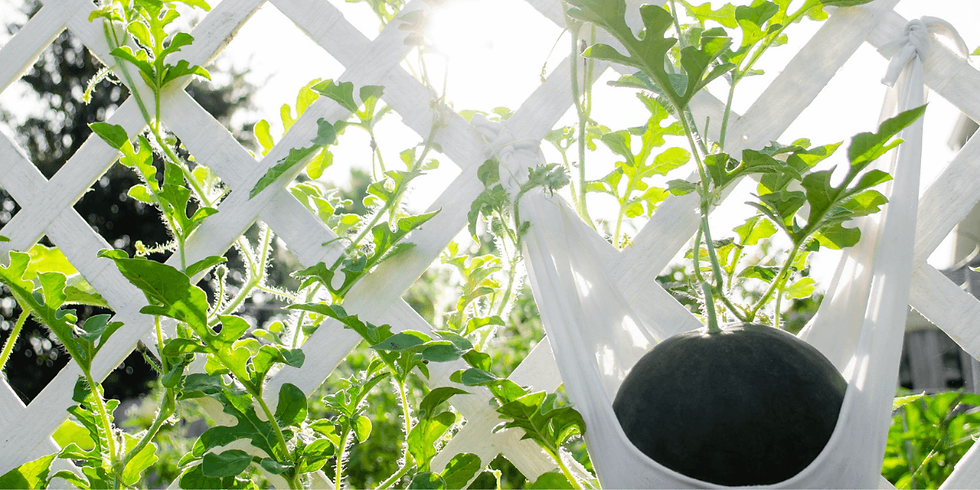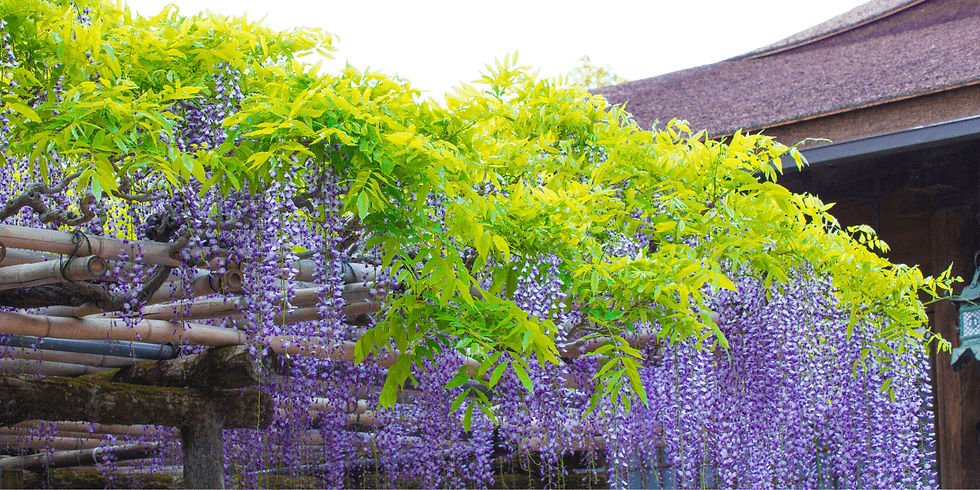What Is a Trellis Used For? From Veg to Vines in Boalsburg, PA
- Adam Allen

- Aug 8
- 6 min read

In a compact garden, every inch counts, and that includes the ones going up. When you’re working with a narrow yard, patio, or small plot, it’s easy to run out of ground space fast. But vertical space? That’s often wide open.
So what is a trellis used for? More than most gardeners realize. This simple structure can support climbing plants, define outdoor space, and add visual interest, all while taking up very little room. It's one of the smartest ways to bring both function and beauty to tight areas where square footage is limited.
Let’s look at how trellises work and how they can completely change the way you think about garden design.
Key Takeaways
Trellises support climbing plants, improve air circulation, and maximize vertical space in tight gardens.
They add structure, define zones, and boost visual interest without taking up much ground.
With the right plants, trellises can enhance privacy, attract pollinators, and elevate overall garden design.
What Is A Trellis?
A trellis is a simple frame or lattice designed to support climbing or vining plants. You’ll often see it standing vertically along a wall or tucked into a garden bed, helping plants like cucumbers, climbing roses, or clematis grow upward instead of sprawling across the ground.
Garden trellises come in all shapes and materials. Some are wooden trellises made with clean lines and natural finishes that blend into lush greenery. Others are metal or plastic trellises designed to last through all kinds of weather.
Shapes vary, too. Flat panels work well against fences or walls, while arched trellises and obelisk trellises add vertical interest right in the middle of a vegetable garden or fruit garden.
It’s easy to confuse a trellis with an arbor or pergola, but there are subtle differences. A trellis is generally a flat or freestanding structure focused on plant support. An arbor typically forms an archway (great for framing a garden entrance), and a pergola is a larger, roof-like structure often used to shade dining areas or outdoor rooms.
Whether it's built from wood, wire, or metal, a trellis is one of the most space-smart additions you can make. It’s a fun way to add structure, encourage healthy plant growth, and make your garden feel taller and more defined without taking up much ground space.
Plant Support: Helping Climbers Reach New Heights
One of the most common reasons gardeners use a trellis is to support climbing plants. Vines like clematis, honeysuckle, morning glories, and climbing roses thrive when they have something to cling to. With a trellis, these plants grow upward instead of spreading out, which helps maximize space in a small garden and keeps the landscaping neat and intentional.
Trellises are workhorses in the kitchen garden, too. Peas, cucumbers, pole beans, and even tomatoes benefit from vertical support. While tomato cages are common, a sturdy wood trellis or even chicken wire stretched between posts can give your vegetables all the lift they need.
Growing them off the ground improves sunlight exposure and air circulation, and makes harvesting way easier, especially in tight outdoor areas.
If you're building your own trellises, think about how many plants you’ll want to train upward. A wider trellis or lattice pattern design might work better for heavy fruiting vines, while a simple trellis is plenty for lightweight climbers. The right setup adds an aesthetic appeal that feels like an accent piece, blending practical function with pleasing effect.
In small gardens, vertical growth is a design strategy. A new trellis can turn a flat garden bed into a layered, eye-catching space filled with texture, movement, and color.
Turning Plants into Living Architecture
A trellis also shapes the way your garden looks and feels. By adding height and structure, trellises turn climbing plants into living features that anchor the entire space.
Add depth without adding bulk
In smaller yards, it’s easy for things to look flat, especially when everything is laid horizontally in rows. Trellises help break up that sameness by introducing vertical interest. Even a structure just a few feet wide can provide support for flowering vines or fruiting plants while giving your garden more layers and movement.
This added height is perfect for creating a more sculpted look without taking up extra space. Whether it’s a slim wooden trellis covered in jasmine or a metal one attached to a fence line, the right material and placement can shift the feel of the entire garden.
Define spaces and frame views
Trellises are also a great way to divide up a yard or guide the eye. Use one to frame a walkway, create a boundary along a property line, or mark the transition into a new garden zone. In landscape design, these subtle cues help a small area feel more intentional and put-together.
With the right garden design and plant pairing, a trellis can offer more than just support—it can create a dynamic backdrop, hide less appealing views, or simply add an elegant touch to an overlooked spot.
Trellises Are Ideal for Tight Spots
Trellises shine in places where ground space is limited, such as narrow front yards, slim side yards, patios, and even balconies. When there’s not much room to spread out, letting vines grow upward is one of the smartest ways to expand your garden without adding square footage.
They’re also a perfect match for container gardening. A simple trellis attached to a pot can support fruits like tomatoes or climbing strawberries, turning a single container into a mini edible garden. With the right materials (wood, metal, or another weatherproof option), you can find a structure that fits your space and holds up through the seasons.
If you're trying to grow more of your food or explore sustainable gardening practices, trellises help make that possible even in compact areas. They allow for dense planting without overcrowding, help reduce the risk of pests, and create cleaner air circulation around shrubs and trees.
In small spaces, trellises are quite essential. They let you build up instead of out, turning every bit of vertical space into something productive and beautiful.
Privacy, Pollinators, and Style

Beyond plant support and space-saving, trellises offer a few unexpected bonuses that make them even more valuable in a garden, especially when space is tight.
Privacy that grows with you
With the right climbing plants, a trellis can double as a living privacy screen. Vines like clematis, climbing roses, or even fast-growing annuals like morning glories can quickly create a soft, leafy barrier. It’s a natural way to block sightlines along a patio or between neighboring yards without building a fence or adding bulk.
A haven for pollinators
Trellises also support biodiversity in your outdoor space. When paired with flowering vines, they attract bees, butterflies, and other beneficial insects that help your garden thrive. This is especially useful in edible landscapes or any garden where healthy plant growth matters.
Personal style, built in
Whether you lean rustic with a rough wood frame or prefer something sleek and modern in powder-coated metal, trellises bring aesthetic value to your landscape. They act as vertical accents that tie together your plant choices, hardscaping, and overall design.
A Small Addition with a Big Impact
In a small garden, every square foot matters. Trellises make it possible to grow more, define space, and bring shape to your outdoor area without taking up precious ground. They’re a simple addition with long-lasting impact, offering both beauty and function in one tidy frame.
If you’re considering a new trellis but aren’t sure what fits your space or style, we’d love to help. At Landscape II, we can design or recommend trellis solutions that work with your layout, your plants, and your goals.
Message us today to book your FREE consultation.
Conclusion
A trellis might seem like a small detail, but in the right spot, it can completely shift how your garden looks and functions. It’s one of those rare tools that’s as useful as it is beautiful, especially when every bit of space counts. Whether you're growing food and flowers or just looking for a little extra privacy, a trellis offers a practical, stylish way to grow upward.
Frequently Asked Questions
What is a trellis used for in a small garden?
A trellis is used to support climbing plants, save ground space, and add vertical structure—all of which make it ideal for compact gardens or narrow outdoor spaces.
What’s the difference between a garden trellis and tomato cages?
While tomato cages are built specifically to hold up heavy vegetable vines, a garden trellis is more versatile—great for supporting vining plants, adding height, or creating privacy in both decorative and edible gardens.
Are wood trellises the best material for every outdoor space?
Wood trellises offer a warm, natural look and strong support for most climbing plants, but the best material depends on your climate, maintenance preferences, and garden design style. Metal or vinyl options may work better in wetter or more modern settings.
What kind of trellis adds the most aesthetic appeal to a kitchen garden?
An obelisk trellis adds height and visual interest while supporting climbing veggies like beans or peas. It’s a favorite in kitchen garden design because it combines practical structure with a sculptural touch.




Comments